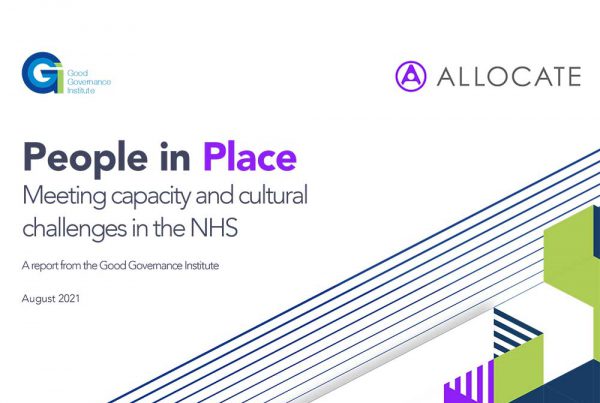In this month’s Hospital Times, Lyn McIntyre MBE, UK Director of Healthcare, writes about flexibility in the workforce. We have reproduced the article below, and you can download a PDF of the published article here.
If we want a meaningful conversation about flexibility and the healthcare workforce, we need to define our terms and consider our perspectives, writes Lyn McIntyre MBE, UK Director of Healthcare at Allocate Software.
In practice, flexibility in the health and care workforce is more a matter of perspective. What an employer, an employee and a patient want out of flexibility may be three different things. So how can we try to reconcile them?
Any sensible organisation operating in a health and care system in 2019 should support flexible working. But it’s crucial that we define what flexibility means to the three key stakeholder groups: providers, workforce and patients.
The shortage area for healthcare globally is the workforce, a case powerfully made in Dr Mark Britnell’s excellent book Human: Solving The Global Workforce Crisis In Healthcare. It is very clear that there are just not enough skilled doctors and nurses globally to meet our current, let alone future, demands.
Flexibility: different things to different people
“Workforce” is an impersonal, technical word; “people” is far better. For some people working in health and care, the idea of flexibility might be one of complete predictability. For example, “I only want to work on Wednesdays, and I need the system and my employer to have the flexibility to cope with that.” Other people’s definition of flexibility is at the opposite end of the spectrum. They might want to work as much as possible. Some NHS nurses prefer to work their contracted hours in consecutive 12-hour shifts, and then do agency work on the other weekday and/or weekend day. This is flexibility manifested as income maximisation.
There are other versions of extreme flexibility. It is now possible to introduce self-rostering, obviously with systems to deal with the less-requested shifts. The “Uberisation” of work for clinical people is not anywhere near to being a reality because of the mismatch between supply and demand, but as things now stand, the ultimate flexibility is probably working via an agency or staff bank only when you want to do so.
Of course, organisations need to plan for safe and adequate workforce cover for patients. And patients need predictable and adequate staff to deliver the care they need, when they need it. This is another kind of flexibility.
These are three distinct perspectives on what flexibility means in health and care systems. Trying to reconcile them all affordably and safely introduces inherent complexity to running the system. With the right technology, the systems do not have to be complex to run or to navigate.
Technology for the health and care workforce is ultimately about trying to match available people with the right skills against the rostering and staffing gaps.
The key thing for every health system is to know where your gaps are and in what staff groups. In the NHS, we have an interesting opportunity here around New Care Models and Integrated Care Systems to get a real understanding about population health. This is about the health and care organisations in an area coming together to ask what the nature and make-up of the population is they are serving, how many patients are covered and what the local pressures are.
Demand might be predictable
Demand might actually be more predictable than many think. For example, GP surgeries and A&Es are always busy on Mondays and quiet during major sporting events. Winter and Christmas also come around predictably.
Technically, matching availability and demand is not hard with the help of digitisation. The crucial element in flexible working within the health sector is the people: how your system makes your staff feel; what quality the conversations and listening that you have with them.
What is the demand for care?
A key part of the picture is to determine the effect on patient care. Patients are often reported as valuing consistency and continuity, and these are open key elements in safer care delivery.
Employers need to think in terms of flexibility for staff, but also about patients and patient outcomes. Therefore, it’s vital to do this matching of demand and supply through effective, proved and reliable systems.





